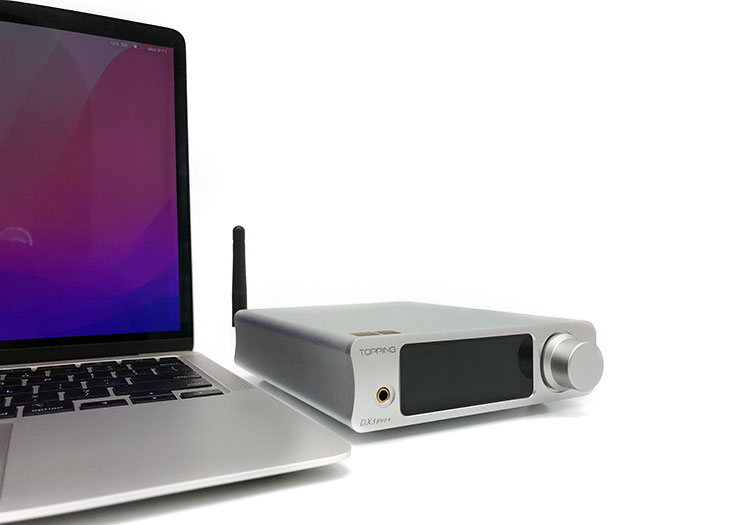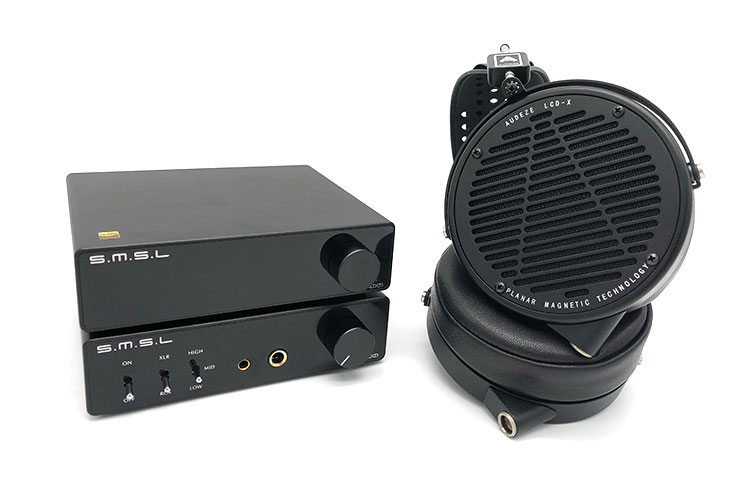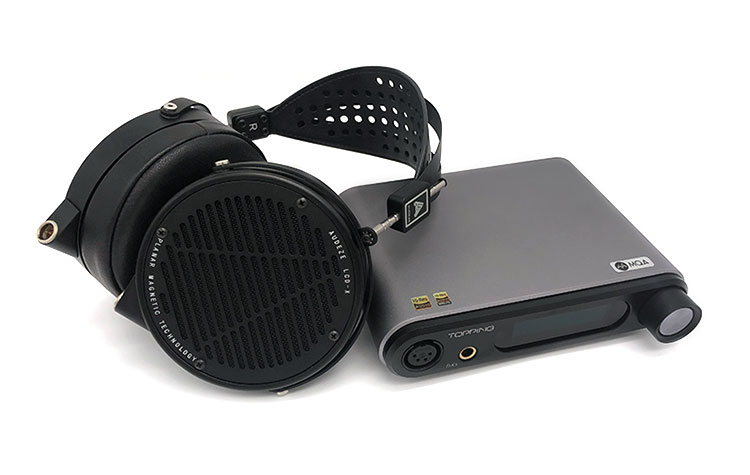Synergy
Power
The imbalance-free volume control as per FiiO’s claim translates to a hassle-free day-to-day operation. It removes any worry that a sensitive gear is set in the imbalance region as the K7 BT is built with 112 steps of normalized range. Micro-adjusting the volume, I sometimes but not always hear a jump in loudness.
Having only two gain settings though for me is a missed opportunity. FiiO should have added a third gain level or delivered more separation between the high and low gain. For less efficient gears like the HD 600, switching to high only adds around 10 to 20 degrees of added freedom.
I think IEM users and owners of headphones with low impedance will appreciate the K7 BT. With the Thieaudio Wraith plugged in, there is plenty of headroom to play around as it settled around the 10 to 11 o’clock position using the balanced output.
Pairings
I’m keeping the focus here on how the K7 BT paired with the Sennheiser HD 560S and the Thieaudio Wraith in Bluetooth mode.
The HD560s offers dynamics and size to the midrange but the stage brings images a step back. Having an etched nature does help the K7 BT in uplifting vocal notes that lack airiness. This is partly because both have a leaner tuning that when combined allows a dramatic and dynamic vibrato to be shown push through.
Violins are thin but the expansive nature brings in the atmosphere of listening to a proper chamber hall. The HD560s also help narrow down the directionality and give a nice height and energy to electric guitars.
With the Wraith’s thicker tuning, the K7 BT balances out the weighty character to be less slow. I also like that while guitars are a bit recessed and rounded, the gentle ringing this pairing puts out is quite a nice mixture of weight and importance.
Select Comparisons
All listening impressions in this comparison section were completed using the K7 BT Bluetooth input option.
Topping DX3 Pro+
Technical
While the DX3 Pro+ has been out for a while, I still see high interest in this sleek device from Topping. It’s however definitely not for those in the market for a balanced all-in-one and those who want more flexibility other than the 3.5mm headphone output provided.
Both units use Qualcomm chips to include Bluetooth in their list of input functions. The QCC5124 on the K7 BT however is slightly less power-hungry while offering the same CODEC compatibility. I don’t know if the K7 BT is bypassing the DAC of the Bluetooth chip just like what Topping did to their entry.
The DAC on the DX3 Pro+ is a lone ES9038Q2M which is balanced capable but is turned into single-ended by the NFCA amplifier module of Topping. For single-ended users, the simpler nature of the DX3 Pro+ gets them a higher 1.8W of power compared to the 1.22W of the K7 BT.
Design
Both are suitable for minimalist setups, but the DX3 Pro+ will still fare better in hiding itself with its slimmer form factor. I was able to comfortably put it on top of the K7 BT with a few millimeters to spare in the rear. The Dx3 Pro+ uses taller feet however bringing it to around two-thirds of the height of FiiO’s machine.
Both employ curves to soften their look. The Topping one tightens up its belt around the waist and bulges towards the front where a simple seven-segment display is together with a clicking wheel. Uplifting the flat face of the K7 BT on the other hand, FiiO sunk the plane for some texture and added an RGB around the volume wheel for color.
Performance
Both could leave those wanting a fully resolving bass reverb hanging but between the two, the DX3 Pro+ is a bit more compressed. For more honesty, however, Topping’s device is quite ahead since it is not as rounded as the K7 BT even though it lacks extension.
The lack of airiness cuts the breathiness of the singers a bit short whereas the K7 BT retrieves more information to better complete the scene. Additionally, the K7 BT has a fuller-sounding midrange which I’m getting a duller impression on the DX3 Pro+.
With acoustic songs, the piano on the DX3 Pro+ is not as moving. And the two may be close in detail but I’m still getting a few more resonance coming from the K7 BT which improves the size of the room.
The DX3 Pro+ sends electric guitars further back. Nevertheless, the K7 BT not being as sharp sounding will be more agreeable to treble-sensitive users.
SMSL DO100 & HO100 Stack
Technical
Opting for a separate system opens options and opportunities to build up as the need and budget develop. This is exactly why some may find the DO100/HO100 stack a nice starting point than an all-in-one.
Aside from being Bluetooth capable, the DO100 also has two DACs like the K7 BT but SMSL’s choice is to use ESS chips on theirs. This explains why there are XLR ports on the rear of the unit that can go straight to the HO100 for balanced amplification.
With a lower THD+N, the DO100 measures at 0.00008% and the HO100 at 0.00006%. This asset however dissipates if we want to talk about power. The separate amplifier idea somehow weakens its stance if we compare the brawnier 2W output of the K7 BT for the same 32W loads.
Design
Sat on top of one another, the SMSL stack is the beefier combo. Looks wise though, in my opinion, the DO100 and HO100 together don’t look too far ahead of the K7 BT. The plain chassis of SMSL’s pairing is only improved by the span of tempered glass which to me is then held back by the unimpressive volume wheels.
Having individual knobs for volume adds a second layer of control and flexibility taking into account that the DO100 also comes with a remote. The one on the DO100 however is a digital regulator, only the HO100 is analog like the K7 BT.
Performance
The SMSL stack is showing a more resolving sustained beat as it digs deeper into the mix than the K7 BT. It has a thinner bass tonality however which could be seen as flat and dry. The K7 BT in adding more roundness and mass to each hit falls short in delineation but it is less boring.
Both are pushing forward the shoutier regions of a song with abundant vitality, though the SMSL stack is shriller. Keypresses on a piano on the K7 BT is not as refined but I’d still choose it for its nimbler guitar twang that is not as steely as the SMSL stack.
The rendering of a busy rock song is a simple task for the SMSL stack as it sifted through the dynamic parts with better precision. Here, SMSL takes the lead as their entry fully utilizes the soundstage and does not push away some of the images that should be near the center.
Topping DX5
$449
Technical
Featuring MQA full decode, the DX5 also boasts a lower THD+N from its pair of ES9068AS DAC chips from ESS. The Bluetooth module used is QCC5125 instead but the CODECs supported on both units are virtually the same except Topping is bypassing the internal decoder of its Qualcomm chip in preference to its main one.
Incorporating Topping’s proprietary NFCA amplifier module, the DX5 is maxing out at a slightly weaker 1.8W per channel. It’s also to be remembered that only the XLR ports at the rear of the DX5 are truly balanced and that the 4-pin ones in front only mirror the signal of the 6.35mm jacks.
Design
Minus the glowing light around the K7 BT, the DX5 could easily take it for creativity in the design department. I’ll have to digress though that the K7 BT is more timeless and could sit at anyone’s desk for years without feeling old.
The DX5 is embracing its digital nature more with its deeper set of controls thanks to its display and multifunction knob. Controlling the K7 BT is more straightforward given that all its controls are laid out using separate buttons and toggles instead of a singular knob.
Performance
Drum beats on the K7 BT are diffused and soft while the DX5 has a denser and cleaner punch that is less blurry. The DX5 is not free from a bit of dampening in its reverberation but it is a lot tighter and it also adds more size to notes.
Looking at the treble region, the DX5 is the spicier product of the two. The K7 BT may be more reserved but it does not meet the same accuracy in instrument placement and directionality. So, horns could be fatiguing on the DX5 when compared even though it is better voiced.
Another thing the DX5 does well is with a live audience that is shown in a more realistic effect. The taller stage and better layering and imaging all combine to fill in the gaps the K7 BT neglects.
Our Verdict
Since I’m most of the time at arm’s length whenever I use my gears, Bluetooth hasn’t been my primary choice for input. The K7 BT however made me realize how much this wireless tech is wanted in the community.
The question I tried to get an answer to is if it indeed is worth it. And now that I have done my first full review using Bluetooth, I can tell that while the chips being used were mostly the same, the circuitry and optimizations done by manufacturers greatly affected the outcome.
As I discovered in my comparison with other options, the K7 BT can hold its own in the battle of Bluetooth streaming. It does deviate slightly from the tuning fans of the K7 have grown to love, but if going wireless is a necessity then expect that the excellence will still be there.
FiiO K7 BT Technical Specifications
- DAC: 2* AK4493SEQ
- Decoder: XMOS XUF208
- Bluetooth chip: Qualcomm QCC5124
- Amplifier: 2* THX AAA 788+
- Outputs: 6.35mm/4.4mm
- Inputs: USB/OPT/COAX/RCA/Bluetooth
- Output power @ 32W load: 2W (balanced) / 1.22W (SE)






